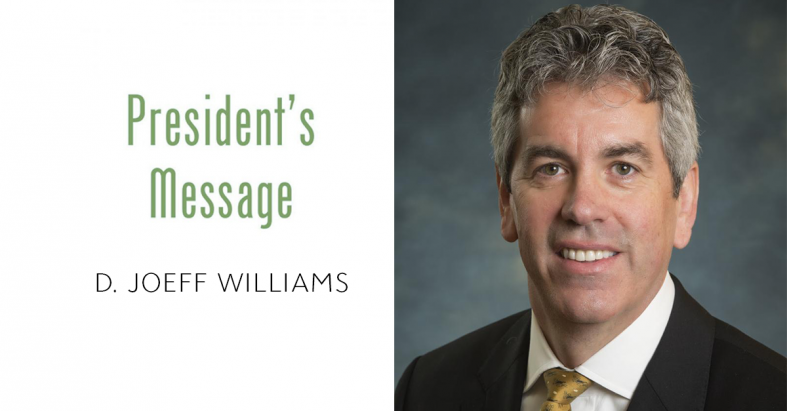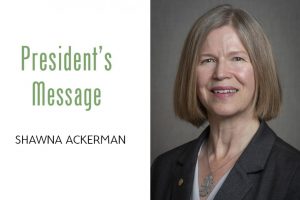By D. Joeff Williams
While recently reading an article about great paintings, I noticed it talked about three common elements for an effective painting: a “strong focal point,” “layers of color,” and “changes in direction.” While not an art scholar much beyond appreciating da Vinci’s “Mona Lisa,” or Van Gogh’s “Starry Night,” these ideas resonated with me and brought to my mind how I think about the meaning of effectiveness in the Academy’s motto—“Objective. Independent. Effective.”
Our motto seems a good place to begin my column in the new year, with a particular focus on “effective.” As I mentioned upon becoming the Academy’s 55th president in November, it would be a mistake to consider that third leg as an afterthought. Beyond our volunteers’ commitment and annual attestment to objectivity, and the independence displayed in our publications and public policy papers, the Academy’s efforts must be effective in order to truly accomplish our mission of serving the public and the U.S. actuarial profession.
The Academy’s solid and well-defined mission is clearly a “strong focal point”—consider our extensive public policy and professionalism efforts. In addition to our four professionalism webinars each year and extensive interaction with regulators at NAIC national meetings, the Academy hosts a number of other public policy and practice-specific webinars, and puts out numerous issue briefs, practice notes, monographs, and policy papers.
“Layers of color” include the Academy’s depth and vast amount of valuable resources generated by our public policy practice councils and the Council on Professionalism. These encompass multiple gatherings on Capitol Hill in the nation’s capital, such as last year’s series of pension briefings, regular “Hill visits” each spring by health policy volunteers, and Essential Elements papers that focus—and are regularly updated—on important topics including Social Security, long-term care insurance, climate risk, principle-based reserving, and more.
Regular outreach by Academy professionalism volunteers—including from the Actuarial Standards Board and the Actuarial Board for Counseling and Discipline—informs actuarial club and company meetings around the country about everything from the Code of Professional Conduct to key and emerging/evolving actuarial standards of practice, and how our discipline system works—all vital to sound professional practice.
For me, a good example of the Academy’s effectiveness has been the annual Life & Health Qualification Seminar, held in Arlington, Va., near the Academy’s headquarters, each November. It has been a personal professional highlight to chair the LHQ Seminar committee for the past several years, and the Academy consistently receives very positive comments and feedback every year because of the work that volunteers and staff alike put into creating and executing a successful (four-day!) program, with an optional exam. The material we cover and the approach we take with combining lecture material with relevant case studies is very effective in preparing actuaries who work or want to work in these practice areas.
Finally, “changes in direction” suggests to me the Academy’s focus on constantly evaluating the U.S. profession for areas that touch on public policy and professionalism. That includes insights gained from our interactions with international organizations outside the actuarial profession, and the appointment last year of Past President Tom Wildsmith to our Board to enhance all of our evolving and ongoing discussions of international issues affecting the U.S. actuarial profession.
So whether a painting is in classical, modern, post-modern, or neo-realist style, and whether the artist uses a brushstroke, pointillism, or more modern techniques, the true test of a great painting is the image that the eye beholds. Likewise, the Academy’s effectiveness is seen in the action undertaken that makes us a vital organization—and one that not only impacts the practicing actuary now, but also enhances the credibility of the actuarial profession and its self-regulation for future years.





